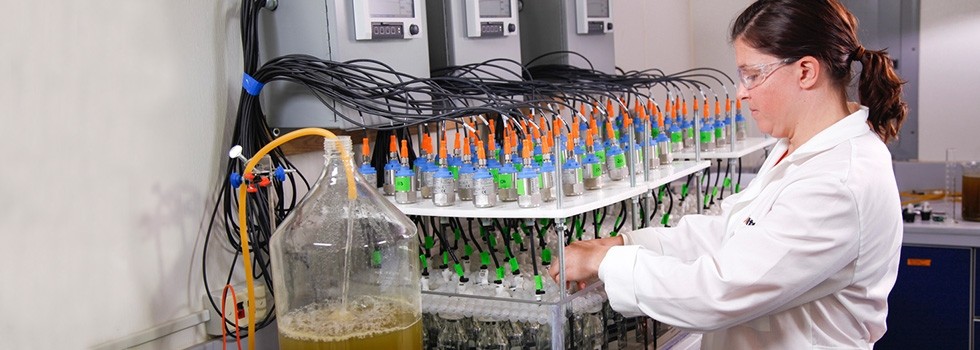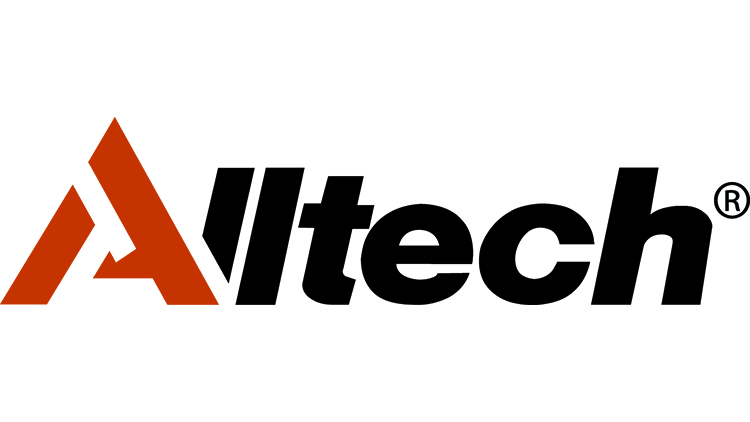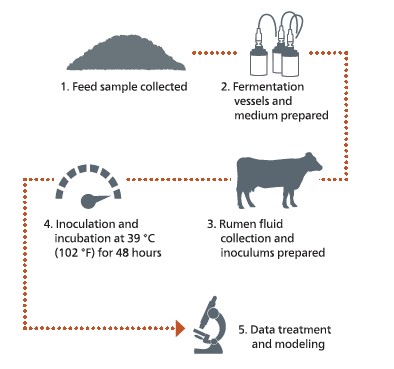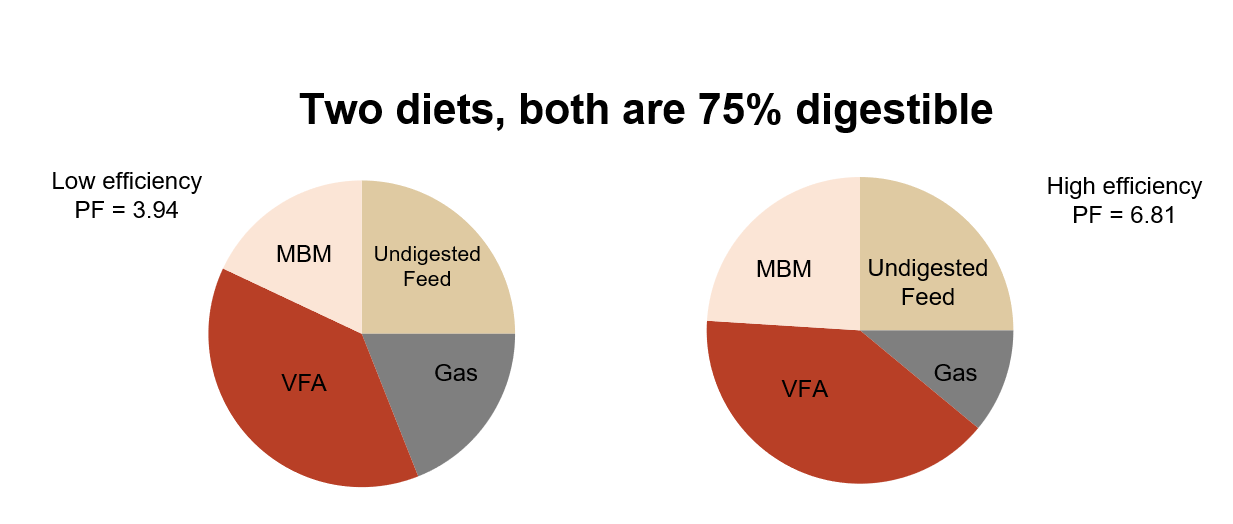Promotional Features
Nutritional tool to evaluate nutrient availability and energy efficiency of ruminant diets
By Dr. Kamal Mjoun, senior research scientist, Alltech
Multiple factors impact the digestion of dairy and beef rations. The primary functions of the rumen are to break down fibre and to synthesise microbial protein. Both functions are essential, as much of the energy and protein utilised by the animal come from the rumen.
Good rumen function will ensure optimal feed intake and digestion, while poor rumen function can negatively impact intake and overall animal performance. Properly formulating the ration and understanding how the individual ingredients in the ration work together can help keep the rumen — and the herd in general — functioning properly.
Optimising feed utilisation
In intensive dairy or beef production, feed inputs typically represent the single biggest cost, accounting for up to 60% of total production costs. However, research suggests that feed inputs are also one of the most under-utilised resources on the farm. Efficient conversion of feed into milk or liveweight gain is highly influenced by the quality and digestibility of feeds.
One of the main causes of rumen upset is acidosis (i.e., low rumen pH), often caused by consuming large amounts of highly fermentable carbohydrates and a lack of enough effective fibre to maintain a healthy rumen mat and proper rumination. When there is too much starch, volatile fatty acids (VFA) can build up and reduce the rumen pH. Rations that are high in fat can also impede microbial digestion in the rumen.
Poor-quality forage may also negatively impact rumen function, leading to poor fibre digestion and reduced energy availability. Poor fibre digestion due to ruminal acidosis conditions can lead to reduced feed intake and increased amounts of undigested fibre in the manure.
Evaluating nutrient availability
To accurately assess the availability of energy and nutrients of feeds, reliable and rapid feed analyses are required. Traditional methods of estimating digestibility focus on end-point measurements and do not provide information about the rates of digestion or about how the diet will impact rumen function, which are very important to know when assessing the amount of nutrients available to the animal.
Alltech IFM is an in vitro fermentation model that simulates rumen fermentation and evaluates the nutritive value of a ration and end-product formation. The test consists of incubating feeds with rumen fluid and a buffer system to mimic natural rumen fermentation. Alltech IFM is an analytical tool used by farmers, nutritionists and feed manufacturers to screen individual ingredients, formulate rations and make informed decisions about the quality of feeds or total mixed rations (TMRs). The evaluation of TMRs or complete feeds is advantageous because it closely simulates animal feeding and evaluates the associative effects of ingredients within the ration.
Nutritionists have traditionally relied on nutritional models and feed chemical characteristics to formulate diets for dairy and beef animals. Many nutritional services provide measurements of chemical composition and digestibility, but this information is static and does not provide a complete evaluation of nutrient availability. Alltech IFM is a more dynamic diagnostic tool that estimates the kinetics of feed digestion, in addition to other important end products of rumen fermentation, rather than simply providing an end-point measurement of digestibility.
Microbial activity is measured in terms of microbial biomass, a critical source of digestible protein for ruminants, as well as VFA, a critical source of metabolizable energy. The goal of Alltech IFM is to offer nutritionists and producers another way of looking at feed evaluation and to propose solutions and strategies that could remedy any potential issues. By using Alltech IFM, we can identify barriers to rumen fermentation, formulate rations based on nutrient availability and help reduce energy losses and feed wastage.
Key parameters and applications
Dietary carbohydrates (including sugars, starch and fibre) are the main focus of Alltech IFM analysis, as they are extensively fermented in the rumen into VFA, gases and microbial biomass. The gas produced during fermentation can be used as a proxy for dry or organic matter digestion. The gas curve is fitted to specific mathematical models to provide detailed insights on the dynamics and balance of different carbohydrate fractions. Two major pools are derived: a fast pool that corresponds to rapidly fermented carbohydrates (mainly sugars and organic acids, starch and pectin) and a slow-pool gas production that consists of insoluble available fibre or slowly fermented carbohydrates.
The proportion of energy supplied from quickly or slowly degrading carbohydrates depends on the feedstuff. For example, ensiled feeds contain more organic acids; cereal grains contain starch; and beet pulp, citrus pulp and soy hulls contain significant amoconsidered energy losses unts of pectins. Grass hay, molasses and beet pulp contain large concentrations of sugars. The type of nutrients available to rumen microbes will affect the rate of degradation of the fast and slow pools, and their sizes will determine the type of organic acids produced during fermentation and may affect the growth rates of rumen microbes.
The end result will be variable amounts of digestible energy and protein available to the animal. Maintaining a balance between forages and concentrates (i.e., quickly degrading carbohydrates) among feedstuffs in a ration is critical to maximise the efficiency of the fermentation. The goal is to maximise the production of microbial biomass and VFA, which are important sources of metabolizable energy and protein, and to minimise the fermentation gases (e.g., carbon dioxide and methane) that are considered energy losses for the animal.
Fermentation parameters and nutrient profiles are used to generate detailed reports to address the strengths and weaknesses of rations and, ultimately, to propose strategies to correct these inefficiencies. For a farm or feed manufacturer, Alltech IFM can help troubleshoot potential problems in a ration, test on-farm strategies, screen potential new products and/or assist in formulating rations. Often, reformulating the ration by changing the feeding rates of the existing feedstuffs is sufficient to fix any issues. Other times, sourcing other feeds may be required in order to achieve efficient digestion.
More sustainable dairy and beef production
The use of Alltech IFM to formulate more rumen-friendly diets helps producers reduce not only physical feed waste but environmental waste, too. Around 60% of a typical dairy or beef farm’s carbon footprint is derived from enteric emissions (i.e., methane from the rumen) and total feed inputs. Used together with an Alltech E-CO2 on-farm environmental assessment, Alltech IFM is an effective tool for predicting farm- and feed-specific enteric methane emissions. Data on methane emissions calculated by using these tools together, has been verified by the Carbon Trust to sit within tier 3 of an IPCC tier 2 farm model. Once a farm has undertaken such assessments and has identified its carbon footprint, various ways to mitigate these emissions will become apparent. For instance, methane and nitrous oxide emissions can be reduced by strategically improving diets and manure management. Alltech E-CO2, which has conducted more than 10,000 farm assessments, can testify that the most environmentally efficient farms are often the most profitable farms as well.
Global analysis
Following the recent opening of the Alltech IFM lab at Harper Adams University in the UK, Alltech now has seven IFM labs around the world, with another due to open in Latin America later this year. Such a global presence has helped make this tool accessible to producers in all regions leading to improvements in the overall efficiency of their farms.
Since 2012, more than 7,000 feed samples have been analysed at Alltech IFM labs. The evaluation of these samples has proven that there are vast differences among ruminant diets, reflecting variabilities in feeding systems, types of ingredients and the quality of feeds. Alltech IFM evaluations are effective at identifying samples that feature extreme fermentation, which are most likely to present production challenges. In addition, ranking TMR samples according to their level of production can help derive an “ideal” fermentation profile that should maximise animal performance, provided the animals’ stage of lifecycle, genetic potential and other management and environmental factors are permissive.
Making the right interpretation
Rumen fermentation is a complex process in which the end products of fermentation (including digested feed, microbial biomass, VFA and gas production) are produced in proportions that depend primarily on substrate availability and the efficiency of the microbial growth. It is important to take every parameter into consideration instead of focusing on a single metric when making conclusions about and potential adjustments to a diet.
Now, more than ever before, Alltech IFM can play a significant role in helping producers address major environmental concerns, reduce waste on-farm and, ultimately, can lead to more profitable and sustainable dairy and beef production.







